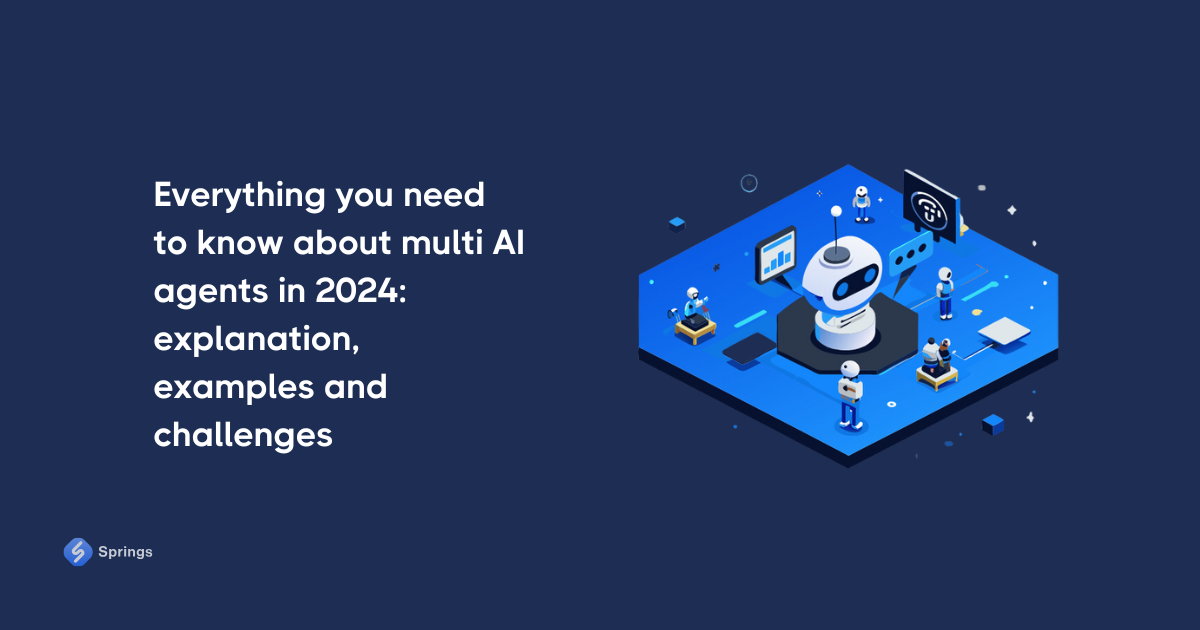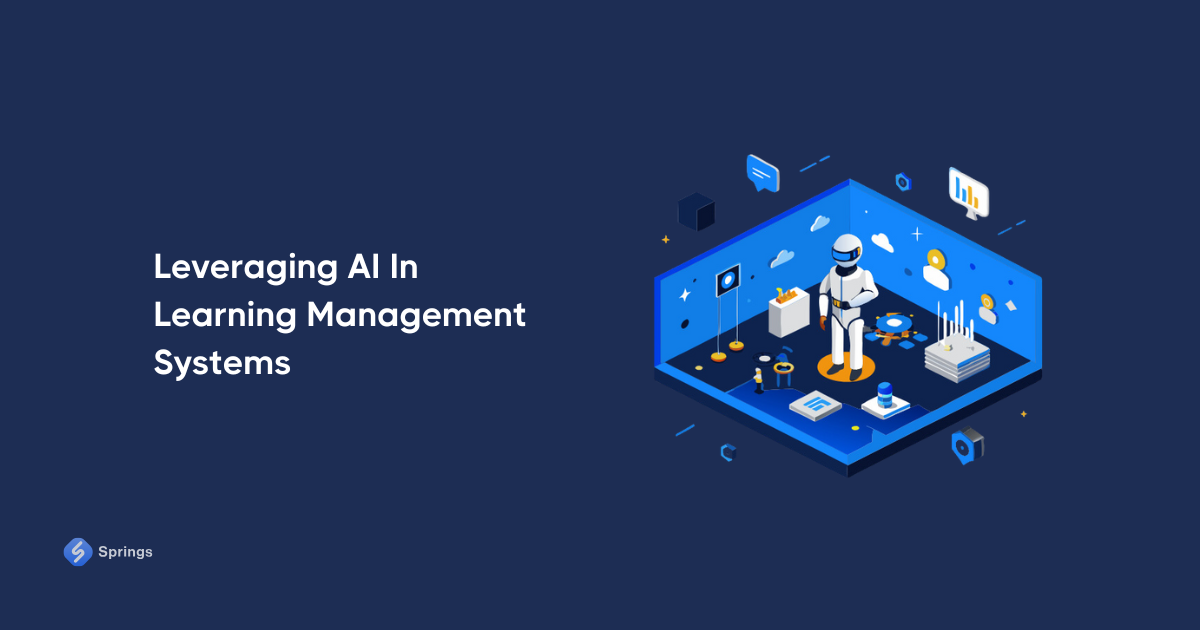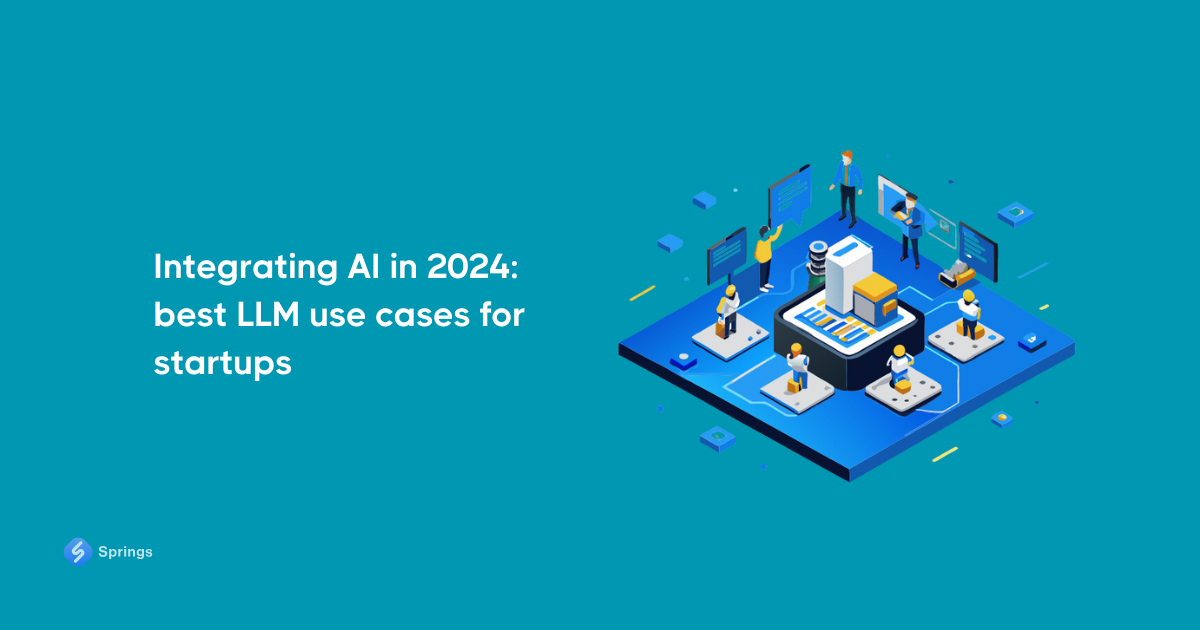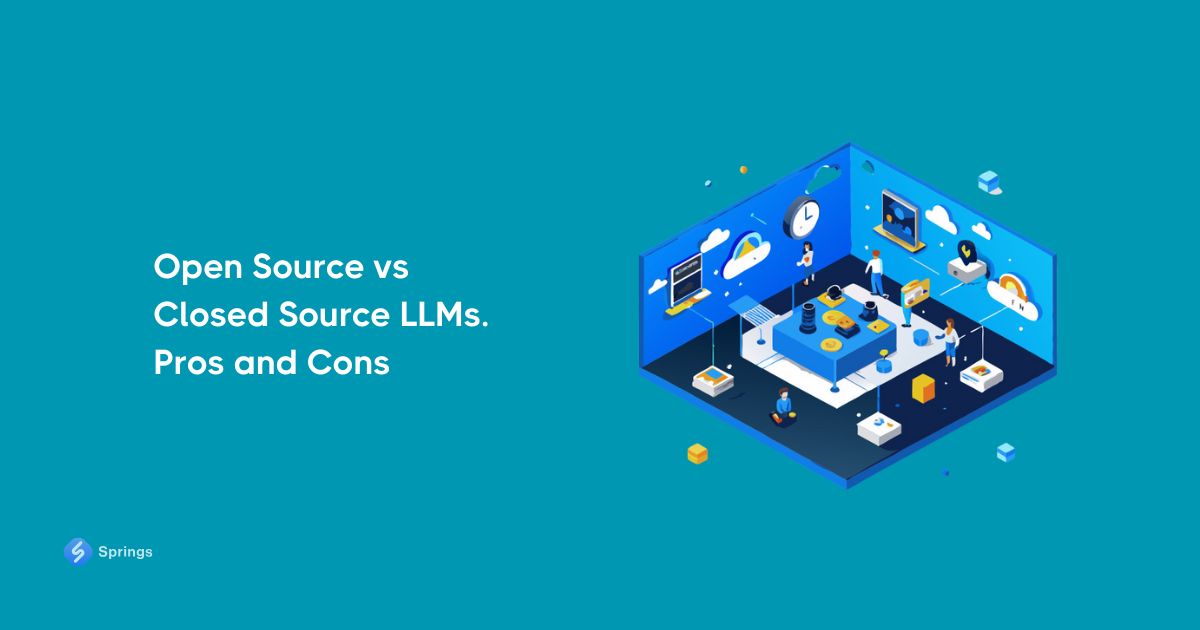How to create a custom learning management system (LMS) from scratch? 2024 Guide
In 2023, the global corporate learning management systems market was valued at $9.98 billion. By 2033, it is projected to grow to approximately $63.12 billion, with an annual growth rate of 20.24% from 2024 to 2033.
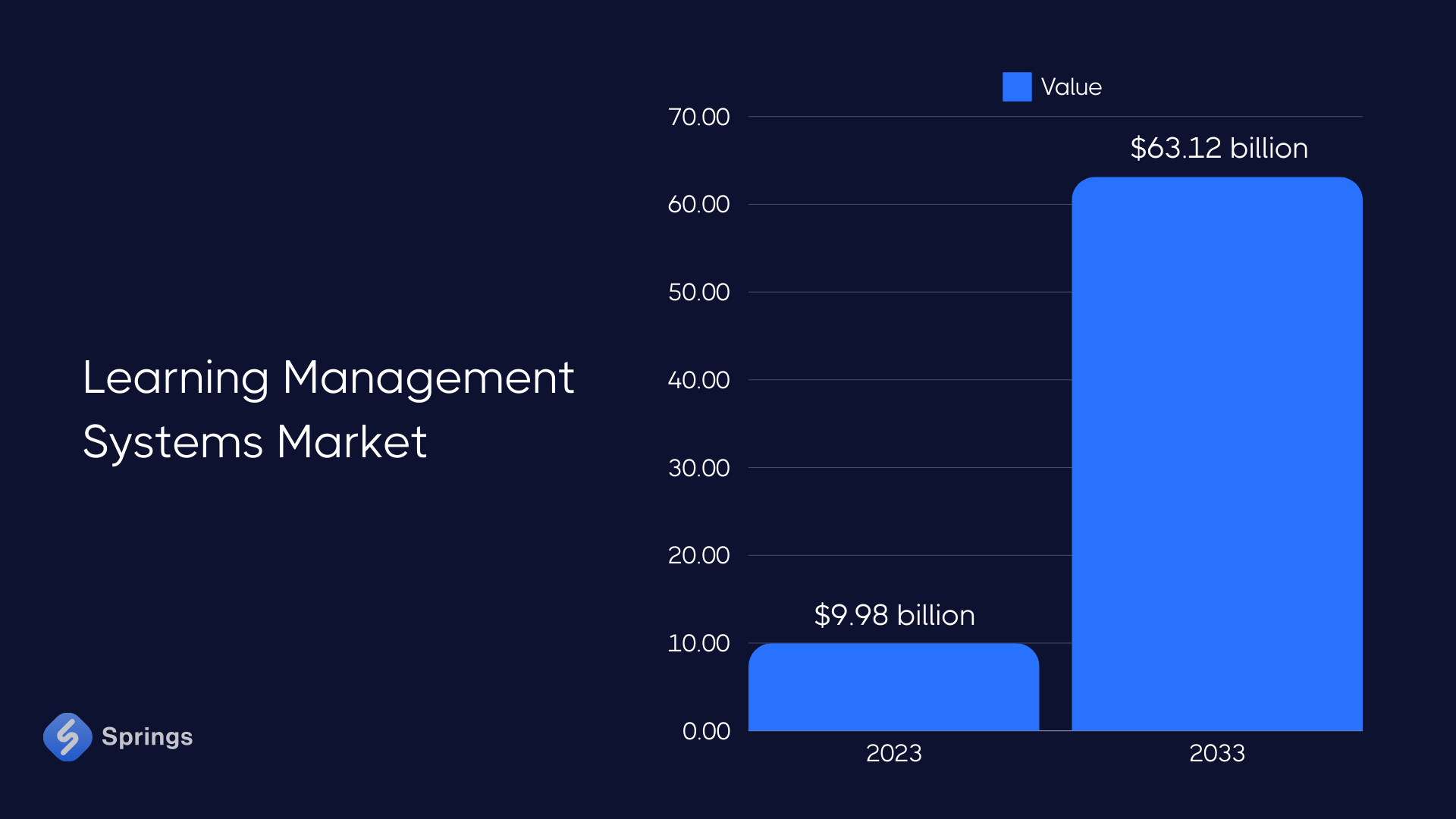
The shift to remote learning has significantly increased the number of people engaging in online education worldwide. Currently, about 98% of universities have moved some or all of their classes online, fueling this growth.
EdTech is growing rapidly and if you're thinking about developing a learning management system, there's no better time than now. So, how can you create a custom-built LMS?
This comprehensive guide draws from our extensive experience to help you build a bespoke LMS from the ground up. We'll start by introducing the fundamentals of LMS development, and then explore the costs and key factors involved. Let’s dive in.
What is an LMS?
An LMS is computer software that helps to give and keep track of courses and training. It helps to give out content, manage users, and analyze data to make learning better.
Any custom LMS starts with user management, where different roles such as administrators, tutors, and students are assigned specific permissions. Course creation and content management are at the core of an LMS, allowing teachers to build courses with various multimedia elements like text, video, and interactive modules. Students access these courses through a different software, where they can engage in interactive learning activities such as quizzes, discussions, and assignments. At the same time, LMS tracks student progress meticulously, recording completed modules, test scores, and assignment submissions.
Communication and collaboration are facilitated through features like discussion forums and messaging systems, fostering an interactive learning environment. Reporting and predictive analytics provide insights into student performance and help to make the right decisions for all teachers.
Also, upon course completion, students can receive digital certificates as awards. Finally, LMS ensures seamless integration with third-party software through APIs or Webhooks, such as AI Chatbots, video meetings, and even CRMs like Hubspot.
Types of LMS
There are many ways to divide LMSs into different categories and segments. We focused on the following types.
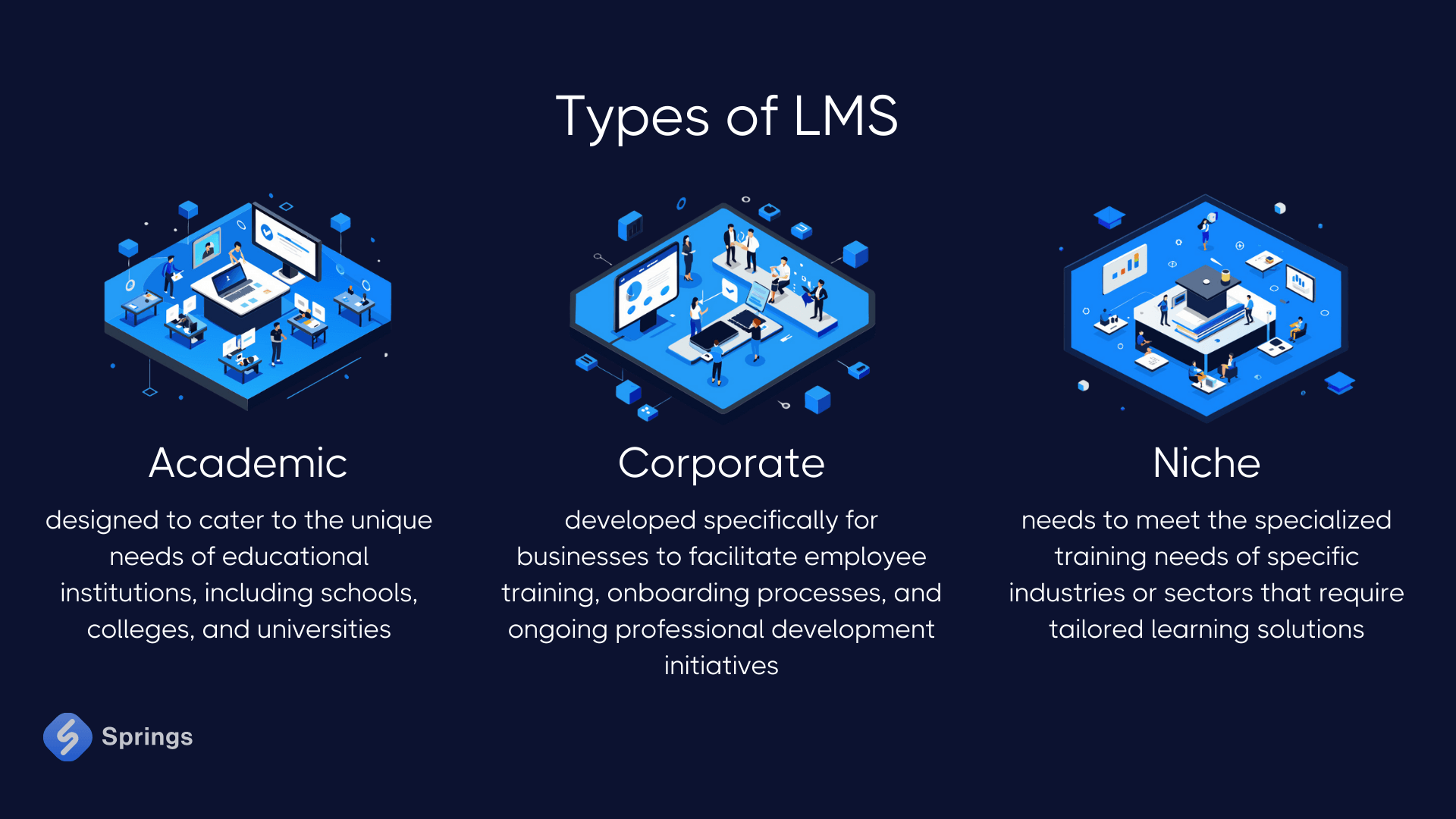
Academic
An Academic LMS is designed to cater to the unique needs of educational institutions, including schools, colleges, and universities. It serves as a comprehensive platform for managing and delivering educational content to students and educators alike. Academic LMS platforms typically feature tools for course management, student grading, and collaboration among eLearning members.
They also support multimedia content integration, discussion forums, and assessment tools to enhance the learning experience. Academic LMS solutions are crucial for promoting interactive and engaging learning environments while ensuring administrative efficiency in educational settings.
Corporate
A Corporate LMS is developed specifically for businesses to facilitate employee training, onboarding processes, and ongoing professional development initiatives. These platforms are needed for centralizing and standardizing training programs across an organization, regardless of its size or industry. Corporate LMS solutions often include features like employee performance tracking, compliance training modules, skill development, and certifications.
These LMSs enable businesses to deploy training materials efficiently, monitor employee progress, and assess learning outcomes to ensure alignment with organizational goals.
Niche
Niche LMS needs to meet the specialized training needs of specific industries or sectors that require tailored learning solutions. These platforms cater to niche markets such as IT, healthcare, legal, aviation, and many others. They are usually characterized by their industry-specific content libraries and regulatory compliance features.
This kind of custom software solutions often integrate industry standards and best practices into their training modules, ensuring that learners acquire relevant skills and knowledge applicable to their professions. Such LMS platforms provide targeted learning experiences that address unique challenges and requirements within multiple industries, making them invaluable tools for professional development and regulatory adherence.
Top Features You Should Consider in Custom Build LMS
Many different features can be included while building a custom LMS: from mobile adaptation to administrative dashboards and conversational AI assistants. But there is a list of top features that we consider to be included in any custom LMS. Let’s have a look at them.
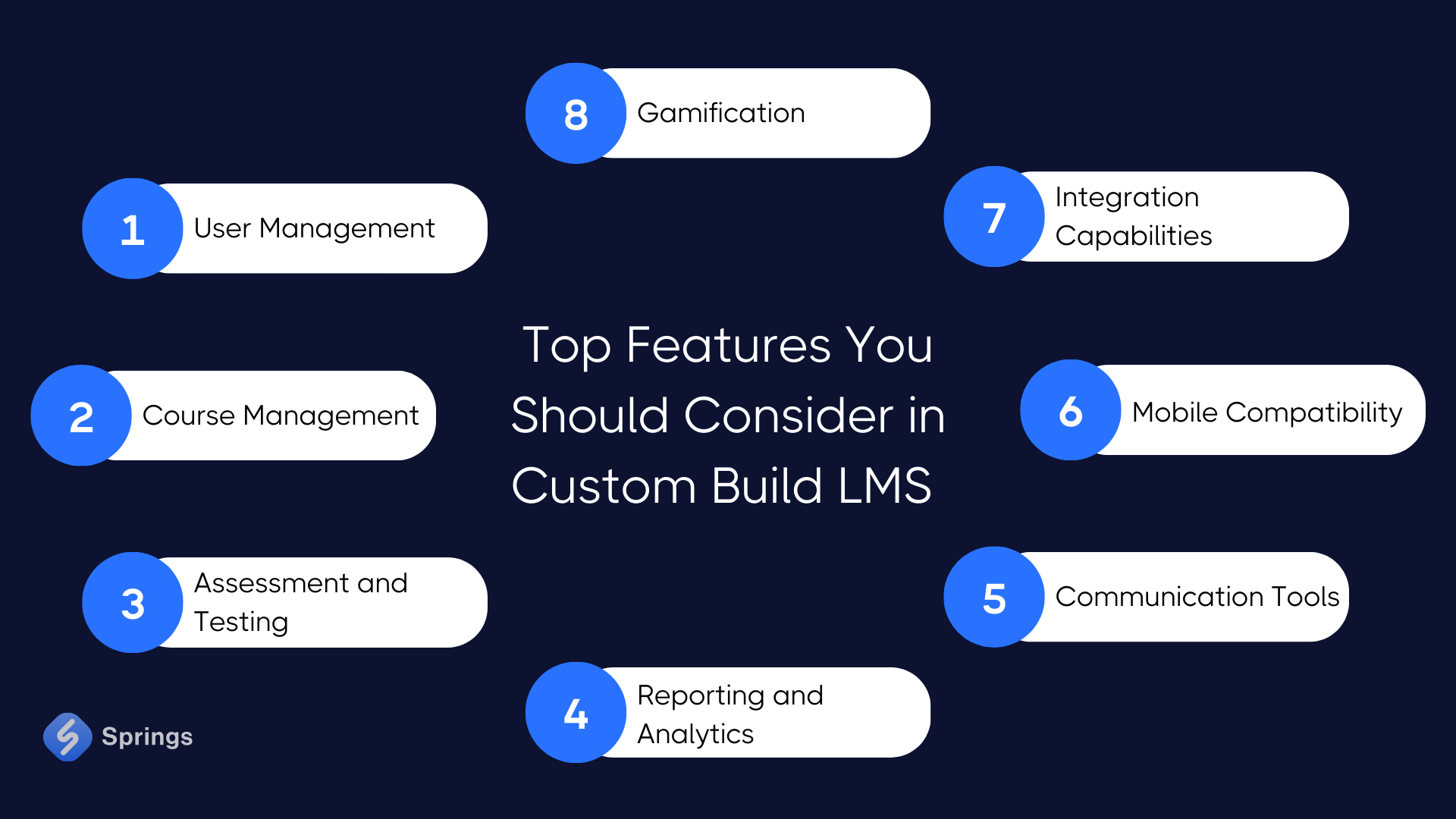
- User Management. Efficiently handle user roles, permissions, and access levels.
- Course Management. Create, organize, and manage courses with various content formats.
- Assessment and Testing. Tools for quizzes, tests, and assignments with grading and feedback mechanisms.
- Reporting and Analytics. Track learner progress and performance with detailed reports.
- Communication Tools. Forums, messaging, and announcements for interaction between learners and instructors.
- Mobile Compatibility. Ensure accessibility on smartphones and tablets with responsive design or dedicated apps.
- Integration Capabilities. Integrate with other systems like CRM, ERP, and content authoring tools.
- Gamification. Incorporate badges, leaderboards, and rewards to enhance engagement.
How to Build a Bespoke LMS from Scratch: 6 Steps
Step 1: Discovery Phase
Begin by thoroughly defining the purpose of your Learning Management System, and identifying your target audience together with the business aims and goals. This step involves research and creation of project documentation such as SRS or similar, to understand the needs of potential users and analyzing the competitive landscape to identify gaps and opportunities.
Establish clear, measurable goals for your LMS and outline the specific features and functionalities it will offer, such as course management, user management, assessment tools, and communication capabilities.
The discovery-based approach ensures that you have a solid foundation for your project. By understanding the market and user needs, you can create a product that meets specific requirements and stands out from competitors.
Clear goals and a detailed feature list provide a roadmap for custom development, helping to avoid scope creep and ensuring that the project stays on track.
Step 2: Technical Architecture
Before starting the project we have to select the infrastructure, and appropriate technologies for both frontend and backend development. Also, consider further AI integrations and a proper AI/ML technology stack.
For the frontend, we may consider using frameworks like React or Vue to create a responsive and interactive user interface. For the backend, choose robust technologies like Node.js or Python to handle server-side logic and operations. Select a reliable database system, such as MySQL or PostgreSQL, to manage and store data securely.
Additionally, decide on cloud services like AWS or Google Cloud for scalable and reliable hosting solutions.
Choosing the right architecture and technology stack is crucial for the performance, scalability, and security of your LMS software development. The selected technologies should align with your project requirements and be capable of handling the expected user load. A well-chosen stack ensures that your LMS can be developed efficiently and maintained easily, providing a smooth experience for users and administrators.
Step 3: LMS Design
At this stage, we have to focus on creating a user-friendly UI/UX. By proper use of wireframing and prototyping tools, we need to visualize the structure and flow of our future LMS. Pay attention to the layout, navigation, and accessibility features to ensure that the LMS is intuitive and easy to use. Incorporate feedback from potential users and stakeholders during the design phase to refine and improve the interface.
Well-planned design is critical to user engagement and satisfaction. An intuitive UI and smooth UX can significantly enhance the learning experience, making it easier for users to navigate the system and access content. By prioritizing design, you can reduce the learning curve and improve overall user retention.
Step 4: Development
The development of LMS is the core stage of its creation as your future product will depend on how professionally it was built. This step consists of the development of both web and mobile components of your LMS, ensuring that each part functions correctly and securely.
Usually, we have to implement at least basic features, such as user authentication, course management, content delivery, and communication tools like forums or chat. Most companies use security policies to protect user data and maintain the integrity of the system. Test each module individually to ensure it performs as expected before integrating them into the larger system.
Development is where your LMS comes to life. By building and testing each component, you ensure that the system is robust and functional.
We strongly recommend to reach to the professional agencies and companies if you would like to develop LMS. Springs is one of the companies that may help with it. Don’t hesitate to contact us if you need any assistance on this.
Step 5: QA Testing
The next important point is to conduct quality assurance testing, including manual (unit testing, integration testing, and user acceptance testing) and automation testing. Unit testing checks individual components for correct functionality, while integration testing ensures that these components work together seamlessly. UAT involves real users testing the LMS to confirm that it meets their needs and requirements.
It is worth allocating experienced QA engineers to make sure that your LMS solution was tested to the latest QA standards and using the most latest tools available on the market, e.g. Sentry or similar. Testing and quality assurance are critical to ensuring that your LMS is reliable, secure, and user-friendly. Identifying and fixing issues before deployment reduces the risk of post-launch problems, enhancing user satisfaction and trust. A well-tested system is more likely to perform well under different conditions and user loads.
Step 6: Deployment & Support
The last step of this journey is to deploy your LMS on a reliable hosting platform and provide ongoing support on it. This includes the setup of CI and CD pipelines to automate testing and deployment processes, enabling quick updates and improvements. It is also essential to regularly monitor the system's performance and implement updates and maintenance to address any emerging issues, enhance security, and introduce new features.
Deployment makes your LMS available to users, while ongoing maintenance ensures it remains functional and secure. CI/CD pipelines facilitate efficient updates, helping you respond to user feedback and evolving requirements.
Tips on the smooth development of LMS
As a bonus, we would be happy to provide you with several tips that will help you to make the development and further processes smooth and clean.
Tip 1: Focus on User Experience. Ensure your LMS is easy to navigate and provides a positive experience for all users. Consider accessibility standards and responsive design for mobile compatibility.
Tip 2: Keep Scalability in Mind. Design your LMS to handle growth in user numbers and data volume. Use cloud-based solutions and scalable architectures to accommodate future expansion.
Tip 3: Invest in Security. Implement robust security measures to protect user data and prevent unauthorized access. Use encryption, secure authentication methods, and regular security audits.
Tip 4: Provide Comprehensive Support. Offer technical support and training for users to help them get the most out of your LMS. Consider creating a knowledge base or help center with tutorials and FAQs.
Tip 5: Continuously Improve. Gather feedback from users and continuously improve your LMS based on their needs and suggestions. Regularly update the system with new features and enhancements.
Tip 6: Plan for Integration. Ensure your LMS can integrate with other tools and systems your organization uses. This can enhance functionality and streamline workflows.
The mentioned tips are based on our previous experience of building different complex systems. For example, one of our Educational Products - elai.io, allows business owners, coaches, tutors, or anyone else to create AI-based videos with ML-generated avatars. This tool is similar to LMS in terms of its domain and complexity. Moreover, it can be integrated into your LMS too.
Conclusion
Finally, building an efficient and useful LMS requires meticulous planning and careful design. It is important to architect the solution in the initial steps to make it scalable. In our previous article, we described how to build an app with AI, and in terms of LMS development, it could also be a good point to consider AI integrations.
Our process begins with detailed planning to ensure all aspects of the LMS, from user interface to functionality, are optimized for smooth design and development. Incorporating essential features tailored to meet specific educational or organizational requirements is crucial. This initial stage sets the foundation for a strong LMS that fits the unique needs of our clients.
Continuous iteration and refinement are key to maintaining a high-performance LMS. At Springs, we believe in ongoing development and enhancement to keep the system aligned with the evolving needs of its users. Our expertise in Generative AI for the educational sector helps us to implement solutions that can bring ROIs to our partners.

